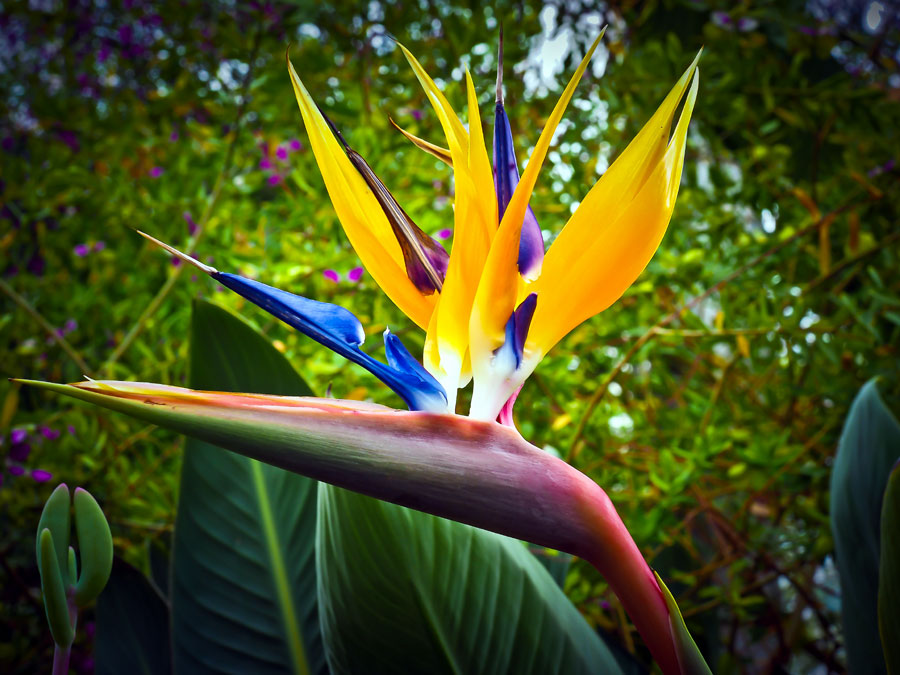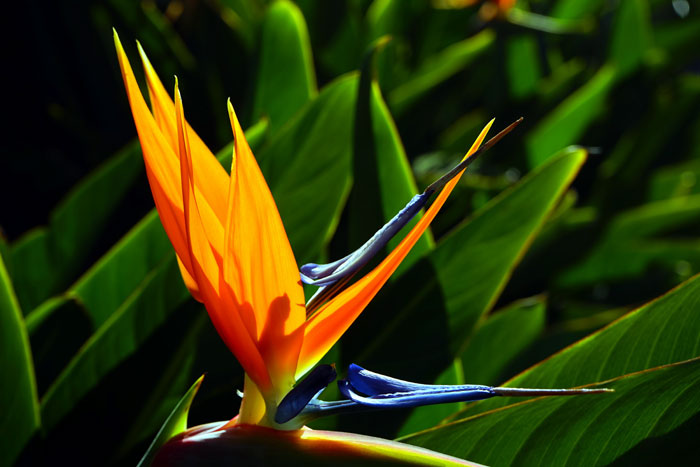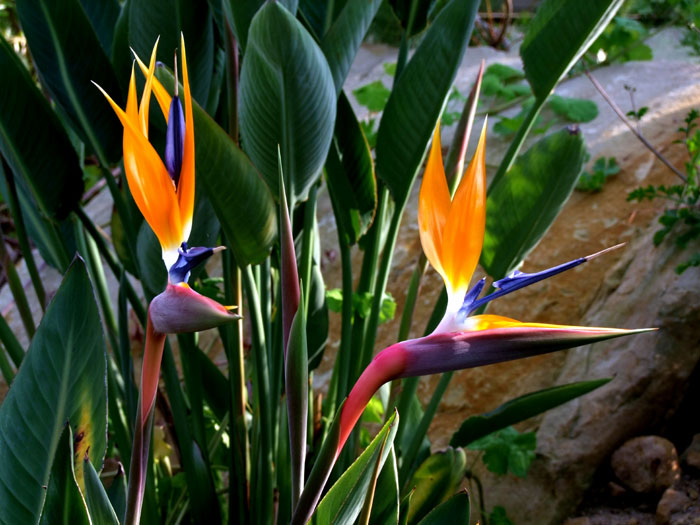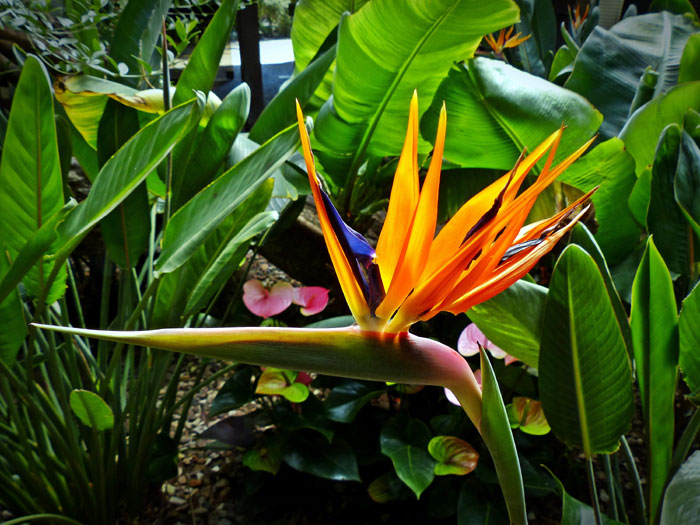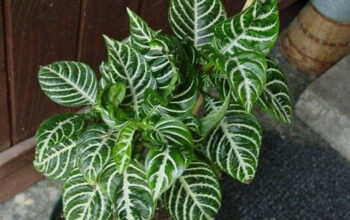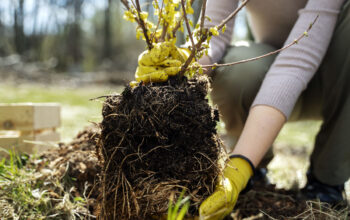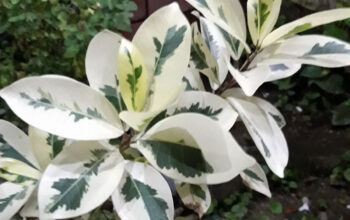Bird of Paradise Plant (Strelitzia)
The genus Strelitzia includes five species of perennial plants native to South Africa. It is a member of the Strelitziaceae family. Bird of paradise flower/plant is a common name of the genus because of a resemblance between its flowers and birds of paradise. Bird of paradise (crane flower), widely known as one of the most beautiful tropical flowers, has a distinctive shape. This tropical flower is closely related to the banana plant. Learn Bird of paradise plant care, and growing conditions in this article.
A large, fan-shaped crown of evergreen foliage is formed by leaves 30–200 cm long and 10–80 cm wide. The leaves have a banana-like appearance with a petiole that is longer than the blade and are strictly arranged into two ranks. An inflorescence emerges horizontally from stout spathe-bearing flowers.
Overview Bird of paradise flower Plant
Scientific name Strelitzia
Common name Bird of paradise, crane flower, peacock flower
Plant type Houseplant, Perennial
Sun Full sun to partial shade
Soil Well-drained, rich soil
Soil pH 5.5-7.5
Flower colors Orange, White, Yellow
Blooming time Winter to Early spring
Bird of paradise plant care
A bird of paradise is an easy-to-grow, large plant that lends a bold tropical touch to any interior. Even indoors, a bird of paradise can grow more than six feet tall with proper care. Adding its wide, arched leaves to your home gives it a dramatic, graceful look.
How to Propagate peacock flower
1. Growing from seeds
Germination can take up to two months. It is best to soak seeds in water at room temperature for 24 to 48 hours before planting. The seeds should be nicked with a knife or nail file before planting. Sow the seeds approximately 1/2 to 1 inch deep and at least 3 inches apart from other seeds. Sow the seeds in a well-draining potting mix. Store it in a warm, indirect area with plenty of sunshine. Maintain a moist but not soggy soil environment with a cloche or plastic wrap. Transplant the seedling into a 6-inch pot once it germinates and has two to three leaves. Your plant will need a permanent home once it has reached 6 inches in height.
2. Growing from cuttings
The division is quicker and easier than growing from seed. The best plants are mature ones that have previously bloomed for three years. For potting your division, you’ll need a new pot and a well-draining potting mix. Alternatively, you can remove any new growth or offshoots at the base of the plant that have at least three leaves. A shovel saw, or knife can then be used to separate the rhizomes below ground.
Sunlight
At least 4-5 hours of full sun in a day is ideal for the Bird of Paradise plant. It can also survive in partial shade. Ensure that your indoor bird of paradise gets plenty of light by placing it in a bright area. Increase the amount of light your plant is exposed to if the leaves are yellowing.
Soil
Rich, well-draining soil with some moisture remains preferred by birds of paradise. You should amend your soil with compost prior to planting and choose an area that is well-drained. To ensure that water flows through the soil and out of the pot, use a pot with enough drainage holes.
Watering
The soil should be moist during spring and summer, during the growing season. However, during the dormant fall and winter months, the soil should be allowed to dry between waterings. Make sure it doesn’t sit in a pool of water as you water it until the water drains from its drainage holes. Excessive watering can result in crunchy brown leaves. Underwatering the plant, yellowish leaves will appear at the edges.
Temperature and Humidity
A bird of paradise prefers temperatures between 55 and 65 degrees Fahrenheit at night and 65 to 70 degrees Fahrenheit during the day. Plants can be moved outdoors as soon as the daytime temperature rises above 70 degrees Fahrenheit.
The humidity level for Birds of Paradise should be at least 50%, but the higher the humidity, the better. It is best to keep the humidity around the plant between 60 and 70% in order to ensure beautiful, glossy leaves on the Bird of Paradise.
Fertilizer
This plant consumes a lot of nutrients. The plant should be fertilized in the springtime with pellets or weekly with liquid fertilizer during the growing season. Give the bird of paradise a good helping of compost every 15-20 days during its growing season, and apply a general plant fertilizer during the winter months. It is advisable not to fertilize birds of paradise in the fall and winter; excess plant food can also result in leaf tip burning.
Read also
How to Grow Kale in winter. Growing Persian shield houseplant. Kamini flowers grow through seeds. Growing Orange in pots. 07 Most popular Kalanchoe in your garden. How to grow poppies in pots. 09 seasonal vegetables for June. 09 Different types of palms. Sage plants growing in your herb garden. ZZ plants growing and care tips.
For Pin:

